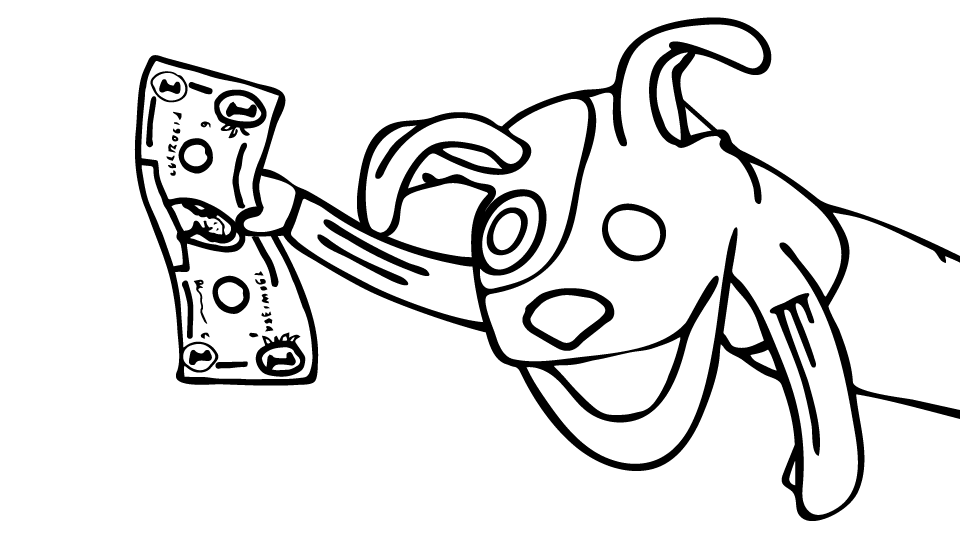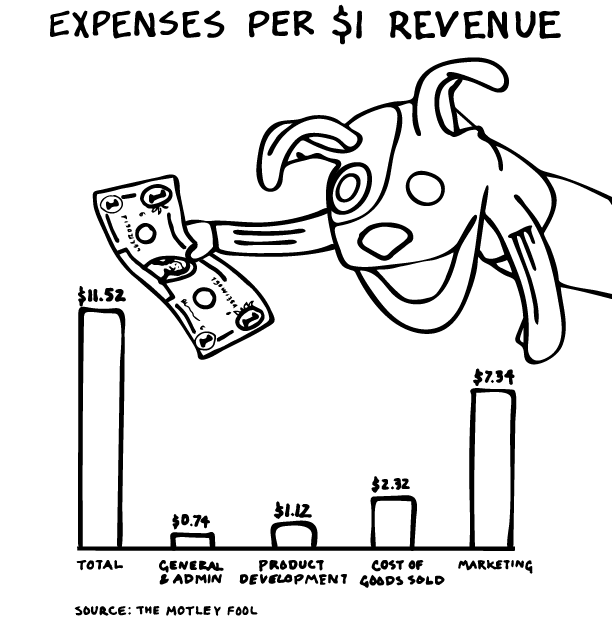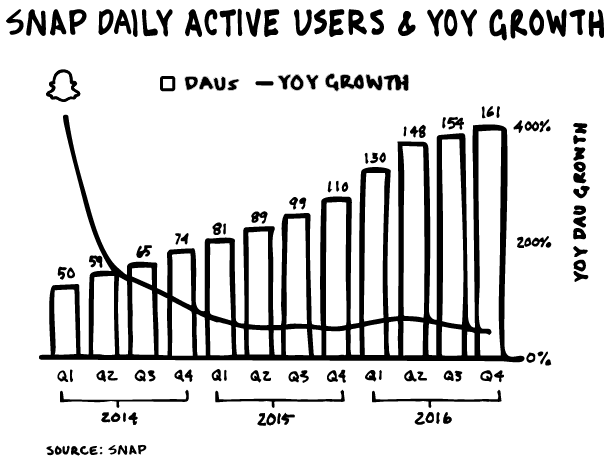
Pets.now
Pets.now
Shameless plug: Please pre-order my book THE FOUR: The Hidden DNA of Amazon, Apple, Facebook, and Google, out this October. Learn more via Barnes & Noble, your local independent bookseller, or, yes, Amazon. It’s a romantic comedy exploring the forbidden love between a marketing prof and the owner of a food truck. I also talk a lot about the tech giants.
Pets.now
In 1996 I co-founded Aardvark, an online pet supplies firm. The vision was basic — the Williams-Sonoma of pet supplies … online. I had a dog, which clearly made me an expert in retail. The pet category had bifurcated into 1) big box, where the focus was on value — bad lighting, hard to navigate, unpleasant experience; and 2) mom and pop stores that smelled funny.
We invested $500K in the site, design, and inventory and opened shop. As we entered the holiday season, we were blown away by our success. Thousand-dollar days became three-thousand-dollar days. But after the holidays, sales dropped to hundreds, even tens of dollars a day. Despite this, we were told by a reporter at The Industry Standard our sales likely put us in the top 20 consumer e-commerce sites in the world. It was a different age — like most e-tailers, most of our (meager) sales came from the one platform people would buy from. Nope, not Amazon … AOL. People were convinced putting your credit card number on the web was an invitation for a Ukrainian cyber gang to use your card to fund a nuclear war. Cue the safety of the walled garden of AOL. So nice and friendly … “You’ve got mail!” My friend Greg Shove used to roam the US shaking down retailers, demanding hundreds of thousands of dollars so they could sell tens of thousands of products on AOL’s Marketplace.
Meanwhile Pets.com and Petopia were in a war to determine who would go out of business first. They both decided to go down with their guns blazing, and each submitted offers to buy Aardvark. We settled at $3.2M. I wanted to take all stock because, you know, it was the internet and these companies were obviously going to soar in value. My (smarter) partner demanded we take half in cash, and we did the deal. We know how the story ends. In fiscal 1999, Pets.com registered $619K in revenue despite spending $12M in advertising, including a $1.2M Super Bowl ad, and selling products for 33% of their wholesale price.
What. Could. Go. Wrong? After raising and spending $300M, Pets.com went from IPO to liquidation in 268 days. #impressive

Despite this, on an IRR basis, my venture into online pet retailing is the most successful business I’ve started. However, we had bigger plans that needed funding (Red Envelope), so we unwittingly jumped on the last helicopter out of Saigon and cashed out. The economics of Pets.com made no sense, and its implosion, in retrospect, seems obvious.
So, what could be the Pets.com of 2017, 2018, 2019 when the music of cheap capital stops, and there are fewer chairs than unicorns?
Snap Inc. (I know, enough already)
$500M in losses on $400M in revenue and user growth that’s looking twitterish (flat). Stock has been cut in half from the high, and the media are piling on. Snap will lose more money this year than Amazon has in any one year in its history. The news goes from bad to worse — Facebook is intent on wiping Snap from the face of the planet, and appears to be succeeding. Even after the firm’s halving, it’s still worth more than Discovery Communications, which boasts $6.5B in revenues and $2.5B in EBITDA.

So, could it go to zero? No. There is real strategic value in Snap, as evidenced by yesterday’s story, obviously leaked by Snap, that Google was interested in buying it. The acquisition would make sense, as Google has been famously unable to crack the social nut, and the intensity Snap has across 150M+ users who open the app 18 times a day could be better monetized by Google. Just as Jet.com wasn’t worth $3B, and likely had no other bidder, the e-commerce firm’s strategic value to Walmart was nonetheless $3B, as Walmart can report YOY e-com growth of nearly 70%. Was Jet.com the biggest .bomb in waiting, or a deft acquisition? The answer is yes.
Back to Snap. Ironically, Mark Zuckerberg’s obsession with destroying Snap may force Evan Spiegel into Google’s embrace at a lower cost to the search engine firm. “Thanks, Mark,” said Larry, Sergey, and Eric.
Uber
$6B in revenues and $3B in losses, poor corporate governance, and a failed (Amazon-like) strategy of spending others to death. However, what has likely hurt Uber’s valuation the most is the realization that the business doesn’t appear to have the same tensile strength to impact other segments of the economy. Two years ago at the DLD conference, I speculated Uber could be the fifth horseman and become a player in last-mile delivery. I was wrong, and the firm has been too distracted with frat-rock scandals and attacks on its core business to play offense in other sectors.
Uber isn’t going away, a fantastic service and brand. But if you believe Aswath Damodaran (i.e., if you’re rational and smart), Uber is worth around $36B. So, if the markets catch up to Professor Damodaran’s view of Uber, you’ll have a value destruction equivalent to Ford going bankrupt (worth zero). Uber could be the biggest .bomb in history, even if it stays in business and a successful firm, as it may register the greatest destruction in shareholder value since the Time Warner / AOL debacle.
Wayfair
Williams-Sonoma is one of the strongest online players in retail, clocking more than half their revenues online. Williams-Sonoma was into e-com before it was cool. The early vision of Howard Lester and Pat Connolly (former CEO and CMO) has paid huge dividends. Enter Wayfair, who by 2019 will have an e-commerce business double the size of Williams-Sonoma’s. Wayfair will spend $90M on TV advertising this year, but has little equity, as evidenced by only 9% of traffic derived from searches on the brand name. Btw, nifty metrics using Google are a better proxy for brand equity and much less expensive than Millward Brown or Ipsos’ tools. But that’s another post. In addition, Wayfair is coming for Williams-Sonoma, competing directly via search — Wayfair bids on 7,000 of the same keywords as West Elm & Pottery Barn, and outbids them on 2/3 of keywords, taking the higher spot in Google search results.

In addition, shipping furniture is hard … really hard. Poor execution has resulted in almost 2/3 of Wayfair customers not buying again within 12 months — a key metric in the furniture biz. Wayfair has adopted a drop-ship model (which as a consultant in the nineties I pitched to every retailer launching an e-com channel). The idea is genius in theory — no inventory, low overhead… One issue though: it doesn’t work. Unless the parent company takes license to / controls the inventory, the brand experience will drop to the lowest common denominator (the guy in Weehawken who doesn’t give a shit about your brand equity and can ship that Tuscan lamp tomorrow or the next day).
Wayfair needs to get the number of less-than-once-a-year customers down to 45% to have any chance of breaking even — at which point, at current valuation, they’d be trading at a P/E ratio of 245. In 2016, Wayfair lost $190M on $3.4B in revenue but commands a greater market cap than Williams-Sonoma and Restoration Hardware combined. It seems to me they are buying customers with unsustainable off- and online expenditures that could (possibly) be justified with large gross margins, network effects, or fanatically loyal customers. But the company has none of these, except for the unsustainable business part, as there is another player with the same shock-and-awe strategy: Amazon, whose cash won’t burn out (btw, Amazon bids on 42.9K of the same keywords as Wayfair).
Wayfair is the US Army in Vietnam, doomed to failure, but not before burning a bunch of villages and spreading a ton of napalm across the sector. It will put huge margin pressure on other players. If I was on the board of Wayfair (spoiler alert: they haven’t asked me), I’d be urging management to take advantage of a drunk and passed-out market, grab its wallet, and go buy a real business before the market wakes up, sober and irritable.
Blue Apron
I’m remiss to say anything negative about Blue Apron, as Mark Mahaney (best Internet analyst ever) just released a positive note on the firm. But I can’t help myself. In 2016, Blue Apron spent $178M on marketing to add 387,000 customers for a customer acquisition cost of $460. In exchange for this carpet bombing of branding revenues are flat. In sum, this business doesn’t work, and Blue Apron’s ability to list on the NASDAQ is evidence we are in a bubble. The company is now a Special Purpose Acquisition Company (SPAC) that has a nice brand and some cash, and 12-24 months to reinvent itself, or find another business.
One of these things is not like the other
A lot of pureplays are getting Amazon-like valuations but don’t have any similar moat (the most robust loyalty program ever invented [Prime], fanatical customer trust/loyalty, etc.). Wall Street misses that losing money, high customer acquisition costs, and investing a crazy amount in fulfillment doesn’t work when you have 60% customer churn every year — as most non-Amazon pureplays do. At some point, as we witnessed with flash sale sites, there will be a major correction.
Be Prepared
 I was a Boy Scout. The Scouts was a safe place for me and other kids “in the middle.” We were (mostly) not the high-achievers academically, nor (definitely not) the cool kids. Just … well … boys in the middle. We were exposed to the outdoors and gained confidence there, hiking with a heavy pack, taking some of the load off other patrol members. We learned to respect nature, scouring the campground before we left, to cleanse it of any litter or evidence we had been there. While not an Eagle, I earned several merit badges, including a “Fire Safety” badge. To this day, every hotel I check into I register a mental map of the hallway and exits, and plan my escape on my hands and knees with a dampened towel over my mouth. I wore my uniform to school every Wednesday — something my best friend from home announces whenever we’re in a group setting.
I was a Boy Scout. The Scouts was a safe place for me and other kids “in the middle.” We were (mostly) not the high-achievers academically, nor (definitely not) the cool kids. Just … well … boys in the middle. We were exposed to the outdoors and gained confidence there, hiking with a heavy pack, taking some of the load off other patrol members. We learned to respect nature, scouring the campground before we left, to cleanse it of any litter or evidence we had been there. While not an Eagle, I earned several merit badges, including a “Fire Safety” badge. To this day, every hotel I check into I register a mental map of the hallway and exits, and plan my escape on my hands and knees with a dampened towel over my mouth. I wore my uniform to school every Wednesday — something my best friend from home announces whenever we’re in a group setting.
To see the Jamboree poisoned, as it was two weeks ago, was not just disappointing … but jarring. It was not the speaker’s fault, but the leadership’s, Randall Stephenson. Mr. Stephenson’s lobbying the president to approve a merger also creates the appearance of conflict, which any public CEO should avoid. The invited speaker did exactly what any rational person would expect him to do. He had previously, in front of large crowds, mocked the disabled and espoused racist and misogynist themes. To believe the Jamboree wouldn’t digress into a Mussolini rally, minus the charm, is evidence Boy Scout leadership are not responsible fiduciaries for the millions of dads who are now rethinking our own sons’ participation in the Scouts.
You. Let. Us. Down.
Scott Galloway
Troop 113 alum, Culver City, Los Angeles
0 Comments
Need more Scott in your life?
The Prof G Markets Pod now has a newsletter edition. Sign up here to receive it every Monday. What a thrill.


